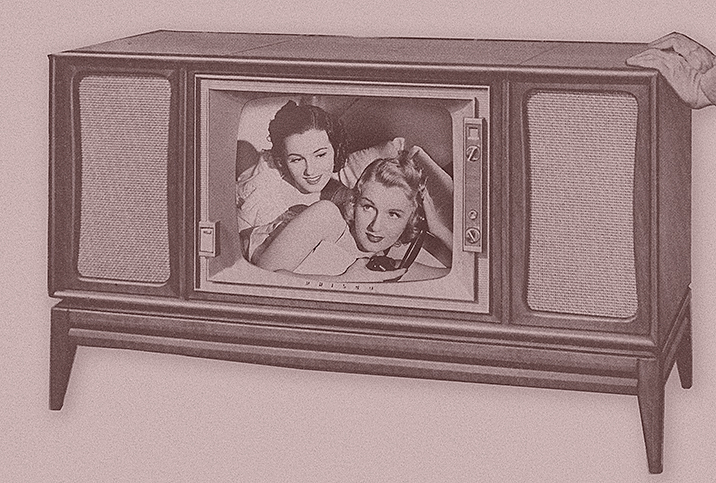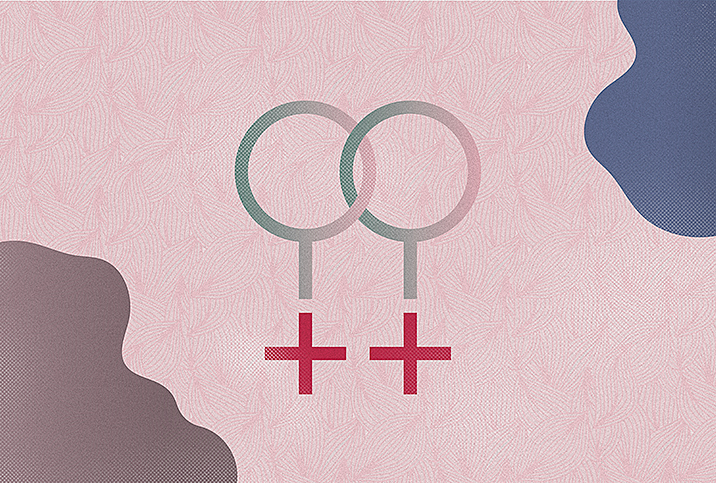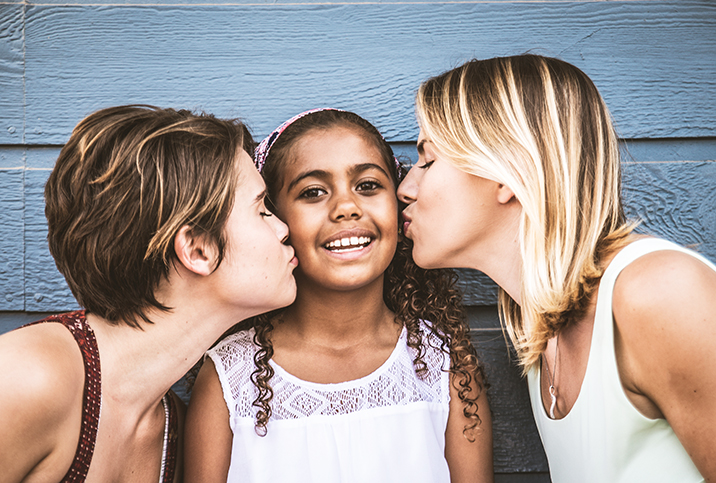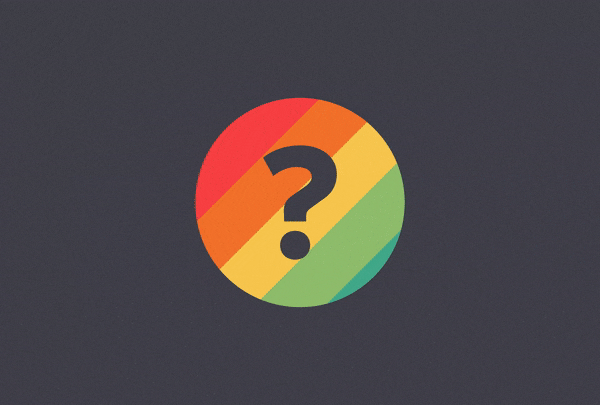Lesbians: As Seen on TV
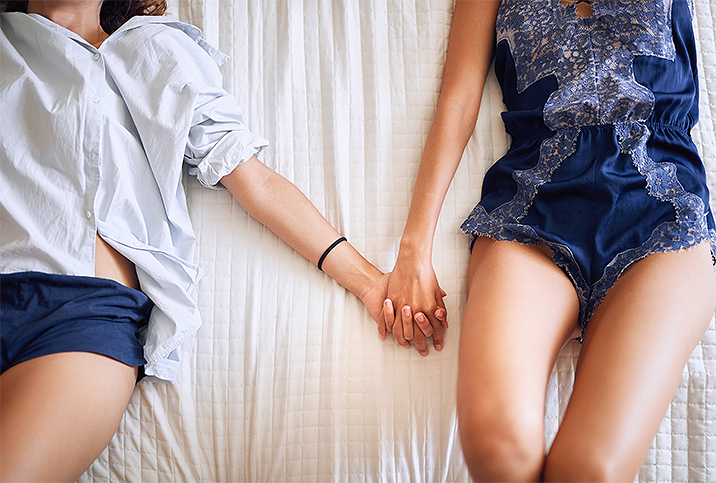
With each passing year—even month—the LGBTQIA+ community sees more accurate and effective representation in the media. Gay characters can be protagonists and antagonists or have strong supporting roles, and TV shows and movies are even getting brave enough to say the words "bisexual" and "transgender" out loud, instead of dancing around the topic with euphemisms.
But that wasn't always the case. Each section of the community was misrepresented differently. Think of the testosterone-soaked action flicks of the early to mid-2000s, and music videos across all genres: Do lithe, lusty models making out at parties and in clubs come to mind? For a while, even when lesbians took center stage, their role seemed to be to have taboo sex and emotionally suffer ("Blue Is the Warmest Color" much?). After all, lesbians were just a "new" and different kind of woman, and a woman is still, to many filmmakers and watchers, a sexual object. Just as with their heterosexual counterparts, reducing lesbian characters to sexual spectacle obliterates the chance to really understand them as complete people.
You may read that and think immediately of your favorite lesbian character, who may fit the description to a T or who may be miles away: well written, complex, fully realized. If it's the latter, you can likely thank the presence of women—especially queer women—behind the scenes.
LGBTQIA+ representation
The TV series "Love, Victor" (a spinoff of the film "Love, Simon") follows a gay high school student's experience with sexuality. "Schitt's Creek," a critically acclaimed show co-produced by Dan Levy, is arguably one of the best examples of inclusivity in recent years. Netflix's "Orange Is the New Black" is set in a women's prison and features a litany of lesbian and other LGBTQIA+ characters, including Sophia, a transgender woman portrayed by Laverne Cox, a trans woman herself. Seems straightforward, but since such a role would normally go to a cisgender man, the casting choice was an enormous step forward.
About 20 to 30 years ago, the release of such shows would've been rare, if not altogether unthinkable. But more media presence isn't always a good thing. The Gay & Lesbian Alliance Against Defamation (GLAAD) comes out with an annual report that details statistical queer representation in the movies. While the analysis itself is a plus, the numbers are less than encouraging for lesbians—in recent years, there have been two male characters from the LGBTQIA+ community for every one female character.
Qualms about lesbian depiction
Anti-feminist sexual predispositions in media have paved the way for inaccurate lesbian representation. Often, women are objectified by men, for men, with consent taking a backseat role. Lesbianism has been used for sex appeal, stereotypes have been exploited for comedic effect and both perpetuate preexisting stigmas.
Strong examples of lesbian oversexualization used to be abundant in TV series. For instance, "That '70s Show" had a consistently sexual view of women's same-sex relationships. Any mentions were met with resounding male appreciation, though no romantic attraction was referenced. While the show didn't necessarily invalidate or discriminate against lesbian relationships, none were central to the primary storylines. Back in the early 2000s, when the series was released, catcalls were favored over romantic acknowledgment.
Consequences
The mistreatment of lesbians on TV has numerous pitfalls, including a largely misinformed outgroup. The foundation of our sexual ideals and sexual culture is in part set by various media platforms and continues to evolve, but we're still far from full inclusivity.
Once someone is categorized as LGBTQIA+, they are defined by their label, hampering how others see them—especially true for lesbians. Sometimes WLW (women-loving-women) relationships are included just for the sake of having one. Great for visibility, bad for a full and complex understanding of other people. Shows like "New Girl" combat this effect by slipping in other aspects of a given character's life—for example, "vagenius" lesbian gynecologist Sadie's love life, including her pregnancy and impending nuptials with her longtime girlfriend.
Another holdover from the hyper-sexualized WLW depictions of days (not so) past is the demand to "prove" a lesbian identity through sexual activity. Unless the audience sees explicit evidence, lesbian relationships are often invalidated, displaying complete disregard for any nonsexual aspects of a relationship, further feeding misrepresentation.
Lesbians themselves suffer as a result, too. Oversexualization has negative impacts on gender attitudes and can lead to an unhealthy appearance preoccupation. It is detrimental both psychologically and physically, as evidenced by an increased risk for body image issues and even sexual dysfunction.
Movement toward change
Even with so many obstacles and burdens, lesbians are becoming increasingly common on television. Some shows involve LGBTQIA+ characters centric to the plotline, such as "The Fosters," which is set within the home of a lesbian couple with several children. Sure, the show piles on the emotional drama, but the family is still a wholesome and relatable one. Fairly new to Netflix, "Sex Education" offers a full spectrum of wonderfully represented teen LGBTQIA+ characters, including Lily and Ola.
And it's not just dramas that are highlighting WLW characters and relationships. "Steven Universe," an animated series, has become a pillar for LGBTQIA+ representation with an abundance of LGBTQIA+ characters designed to be understood and adored by kids, including the same-sex couple of Ruby and Sapphire. The show posits they experience fusion via a strong emotional and romantic connection that culminates in Garnet, a central character who acts as a beloved guardian. Another kids' show, "Adventure Time," repeatedly explores the lesbian themes of characters Princess Bubblegum and Marceline the Vampire Queen, fan favorites across all ages.
Even in largely heterosexual ensembles, where lesbian couples are more likely to be otherized, representation is improving. In two seasons of "American Horror Story," actor Sarah Paulson portrays lesbian characters, and is herself in a long-term same-sex relationship. A primetime hit that was later poached by Netflix, "Lucifer" includes a same-sex relationship between characters Mazikeen and Eve.
Accurate lesbian representation in the ever-influential media is crucial for the LGBTQIA+ and surrounding communities. Every orientation deserves a chance at equality, and lesbians are long overdue for theirs. Luckily, advocates are making great strides to assure that everyone can find something relatable in today's media selection, and televised representation is leading the way to do so.












